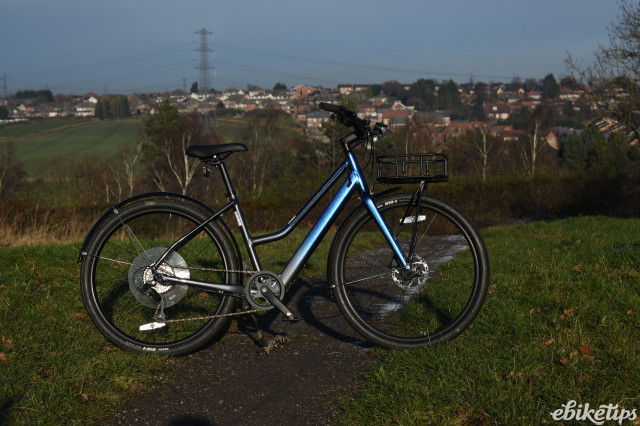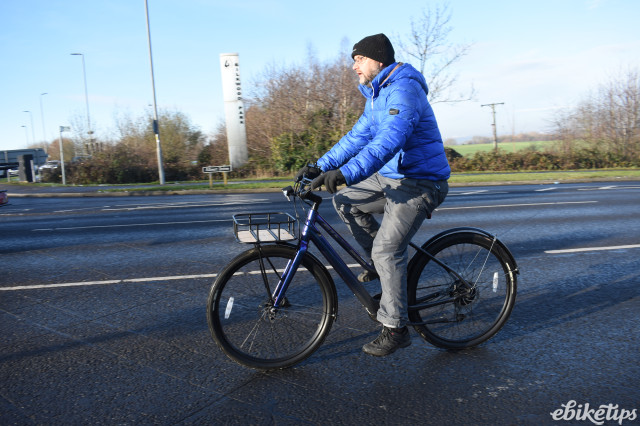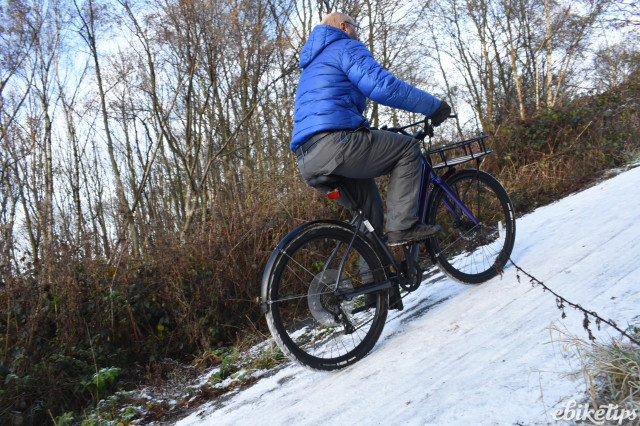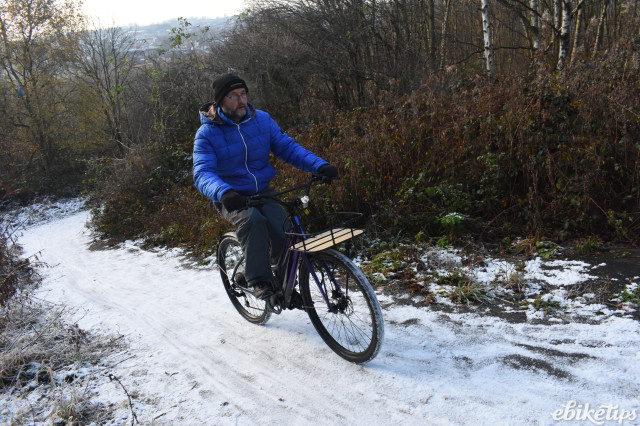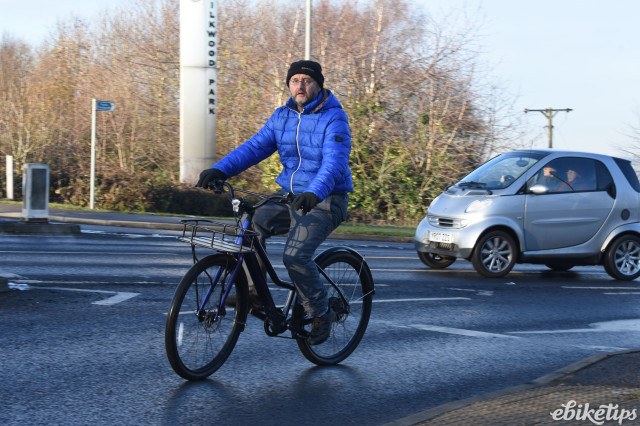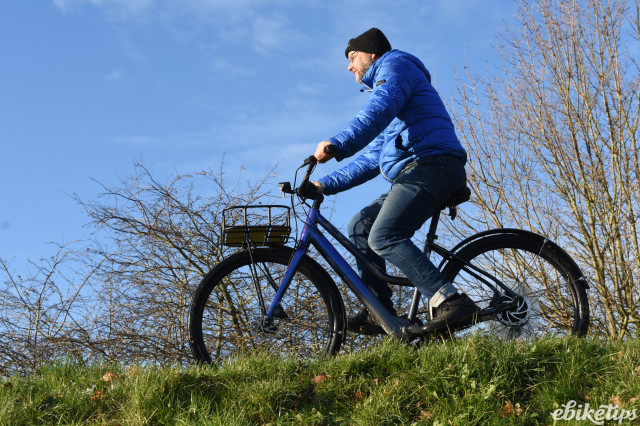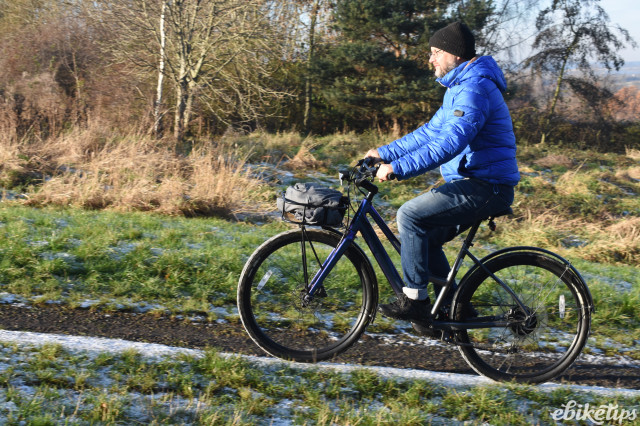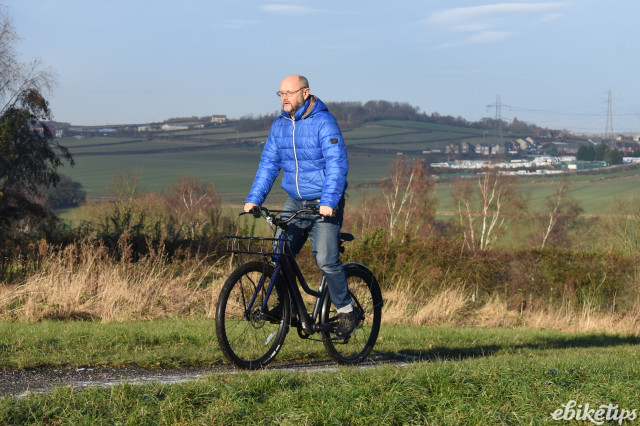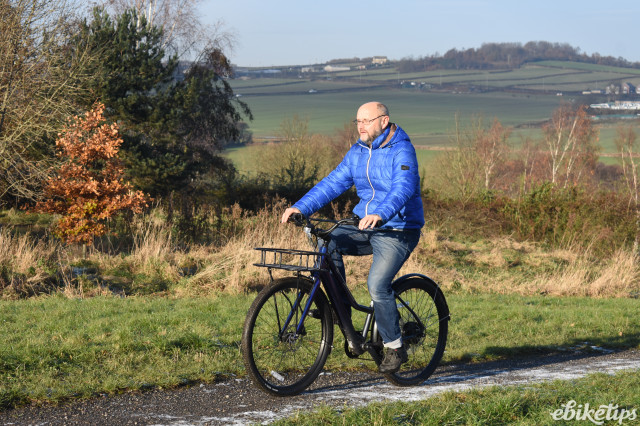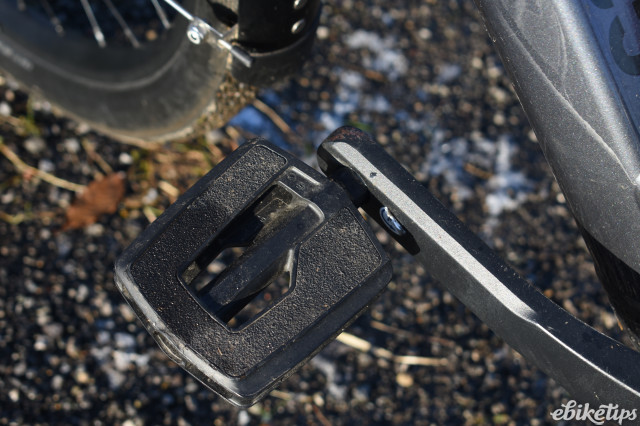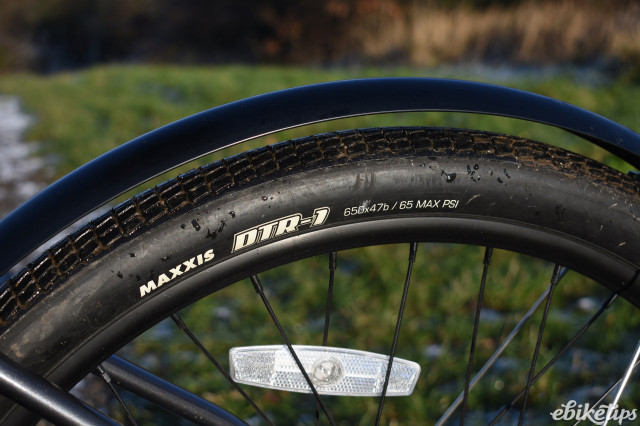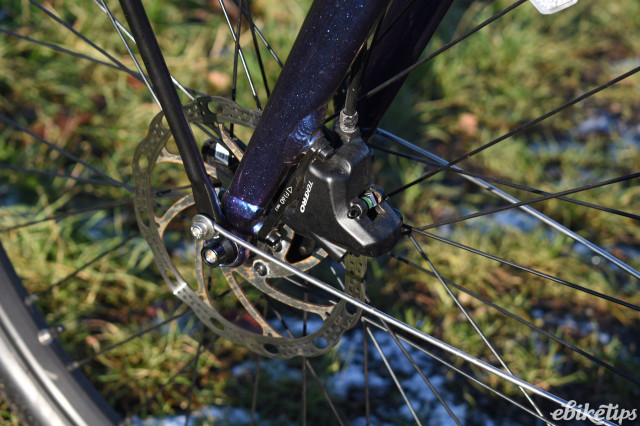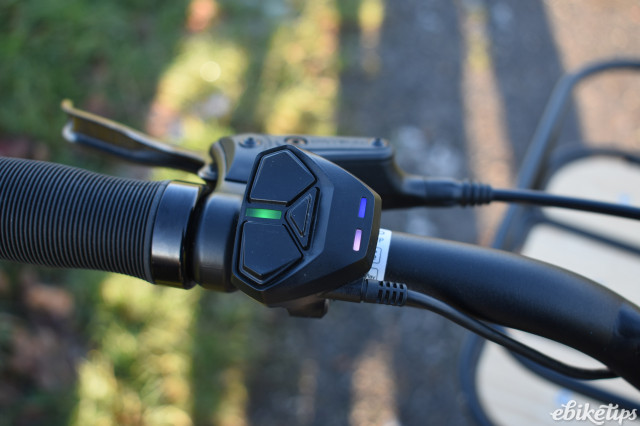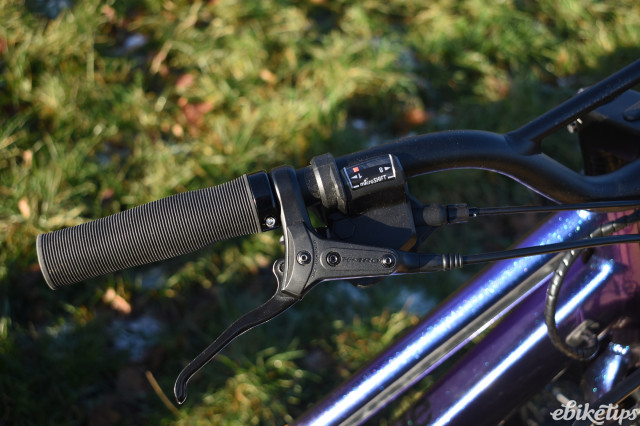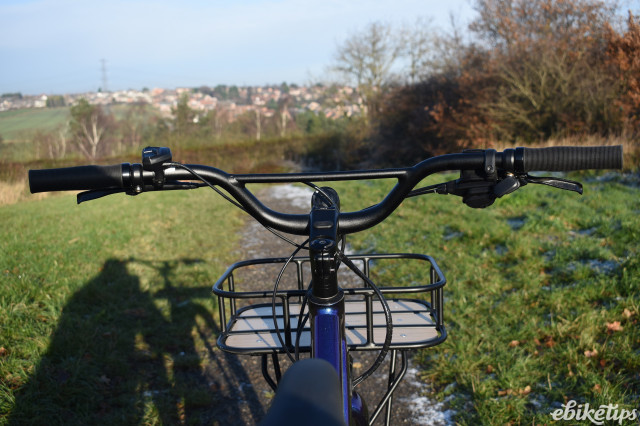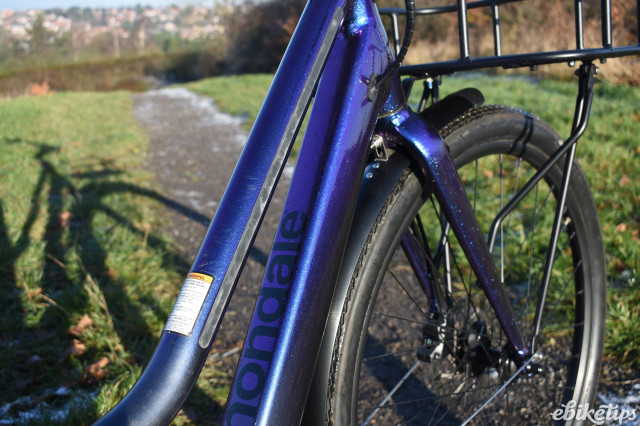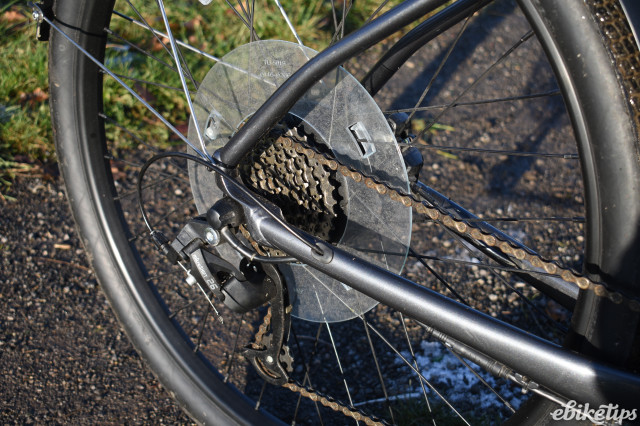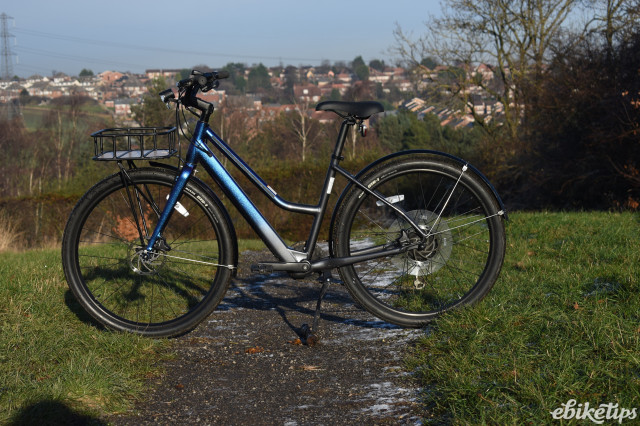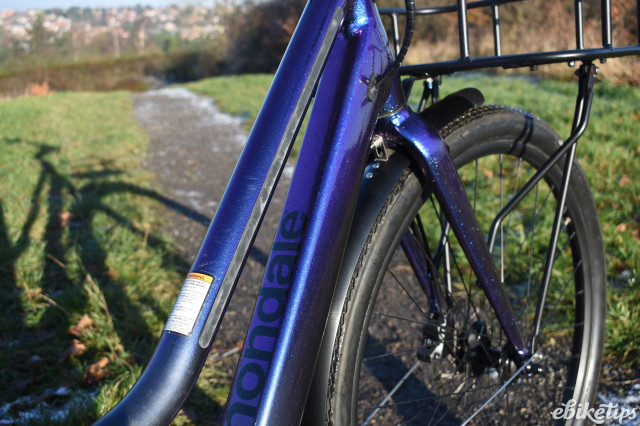Cannondale Treadwell Neo 2 EQ Remixte
Overview
- Light weight
- Small but effective motor
- Easy to use thumb control unit
- Small battery
- No rear rack mounting points
- Exposed wires to rear light
Cannondale's Treadwell Neo 2 EQ Remixte is an unusual mix. A city-orientated e-bike with striking looks, it blends a lightweight frame with a mixte style dropped top tube, a small rear hub motor from Far Eastern manufacturers Hyena, 27.5" inch wheels and a front rack.
This particular model in the Treadwell range comes in a lovely deep lustrous colour with the official designation Purple Haze. The interesting looks are complemented by an e-bike system that performed pretty well overall, though I had quite a few quibbles with a number of the bike's design features.
The spec
The Treadwell blends a lightweight frame with comfortable looking geometry, distinctively wide BMX-inspired bars and full equipment, with the notable exception of a rear rack - nor are there the threaded eyelets for retrofitting one, which are pretty standard on hybrid style e-bikes. Given this version of the Treadwell comes with a front rack, lights, mudguards and kickstand, this is a strange and unhelpful omission for those who want to use their e-bike for the likes of a big(ish) shop etc
At 19.4kg it's a fairly light e-bike when you consider it's (almost) fully equipped. If you think you can do without that front rack, then the weight drops to a more manageable 18kg, which is starting to nudge the boundaries of becoming a lightweight e-bike.
The small rear hub motor is from Bafang competitor Hyena (the MRC-A250 hub to be precise). It was my first outing on this system and I was keen to try it as Cannondale's web page describes it as torque sensing. However, as you'll see in the ride section, it didn't perform in the way I'd come to expect from other torque sensing systems.
First visual impressions are favourable though, as it looks well integrated into the frame design and it's not at all apparent this is an e-bike with the small capacity 250Wh non-removable battery housed in the down tube.
I always prefer to have the option of removing the battery for charging, but it seems to be an increasing trend, especially on lightweights, to have removability only for servicing or replacement by a bike shop.
There is no data display, but all the info you really need is shown by the three coloured lights on the thumb control unit. It can show battery level in 25% increments and which of the three power levels you are in - all very neat and straightforward and easy to use.
Braking is courtesy of Tektro hydraulic discs and you also get an 8-speed Microshift derailleur gearing system with a reasonably wide range 11-34 tooth rear cassette.
The EQ stands for 'equipped' and this version of the Treadwell comes with strong, full length, alloy mudguards, a side stand and hardwired lights. With a load in the front rack, parking the bike needs care to stop it toppling over, so I would have preferred to have seen a meaty, wide, centre kickstand.
A more notable complaint on the design was the location of the rear light, clipped onto the seat rails with the wire exiting the top of the seatpost. This actually got knocked off at one stage and the wires torn out, but with no permanent damage done it looks an easy fix to push them back into the connector. Like the lack of rack mounts, this is another rather odd design choice.
There is also an app which provides basic speed and navigation based stats via a sensor on the front wheel. It relies on Google Maps integrated into the software. It worked well and the sensor always maintained its Bluetooth link with my smartphone. It doesn't however provide you with stats on the e-bike itself, such as an accurate percentage of remaining battery level or a battery health check in the way that, for example, Specialized's Mission Control app does.
The ride
First impressions over easy terrain were of a very comfortable and zippy ride even in the bottom power level. The Maxxis DTR-1, 27.5" x 1.85" tyres feel free rolling but the semi-slick tread also provided grip off road and on cycle paths coated with frozen snow.
The low step frame makes it very easy to get on and off and it is nice to have a front rack to use as you ride along to have articles you want to hand, such as a camera bag or extra clothing layers.
On moderate hills it's very effective but - as with many of the smaller hub motors - the power wilts a bit on 10% plus slopes. This meant it posted a time that was about what you would expect on my long hill climb test. The low bottom gear however helped if get comfortably - if not particularly quickly - up my ultra steep hill climb test. Most impressive was the grippiness of the tyres on crisp snow.
During extended hill testing and on the photoshoot, with max power selected most of the time, the relatively small 250Wh battery on the Hyena motor system arrived at the red warning light (indicating 25% charge or less left) fairly quickly - suggesting a 10-15 mile range if left on full power all the time. However, ridden carefully, it will of course last longer. I went on a hilly ride of 15 miles involving over 1,400ft of climbing and still had half the battery left. I found I could bowl along at around 14mph on the dead flat in still, cold weather and only needed level one of three on most climbs and very occasionally level two of three on 10% plus climbs. The top level remained unused.
Power delivery picks up as soon as you start pedalling - good for hills starts and the like - but doesn't always stop straight away when you stop pedalling. It seems to respond more to crank movement than pedal pressure. Despite it being described as a torque sensing system, it does feel rather more like a pretty refined cadence sensing one.
A final quibble is that the power cut out a couple of times and required me to reboot the system. The reason wasn't clear but it could possibly be that I pressed the bottom power selection button too long and went into walk mode. It only happened twice, but it's certainly not something you want happening at all.
The manual that came with the bike suggested that you fit a Hyena range extender battery, but the frame lacked bottle cage mounts which is normally where such range extenders sit. This meant it wasn't obvious where you would put one should the Treadwell be compatible with such a system.
Overall this is a nice, light, comfortable e-bike to ride and use, with a responsive little hub motor system that delivers power smoothly and economically in the lower power levels and is good up all but the steepest of hills. The large volume tyres are useful for easier off-road surfaces too.
However, given the lack of rear rack mounting, lights integrated in odd places on the bike (especially that rear one), the small battery capacity and the fairly budget nature of the components, I felt the £2,100 price tag was a few hundred pounds over the mark. Even at £1,800 - a price I've just noticed it discounted to at Avon Valley Cyclery - it still seems a bit pricey against the likes of Dallingridge, EBCO and Estarli as discussed below.
The competition
If you are after a budget-priced low-step runaround with good hill climbing ability, it's hard to beat the bigger-batteried Dallingridge Harlow, even though its price is now £1,349. Alternatively, if you don't mind the livelier handling of the smaller wheels, the EBCO Street 2 is another very solid performer offering good value for money at £1,399.
The Estarli e28.8 Trapez is a step up in sophistication, but still at a very manageable price tag (£1,685 with mudguards and a rear rack). It has the advantages of a user-friendly mid-step frame and a punchy motor and is wonderfully lightweight at 16.5kg. In similar weight territory is another bike we rated highly, the high quality Raleigh Trace (£2,099).
At the top end of price range competitors, basic spec versions of the Specialized Turbo Vado SL - which we really liked - are currently available from £2,500 - only a few hundred more than this Cannondale model and for that you get a top notch, lightweight mid-drive on a wonderfully well put together machine.
